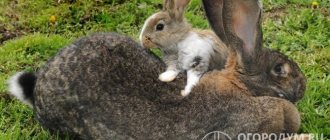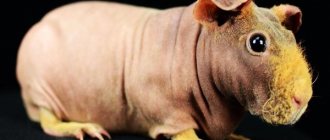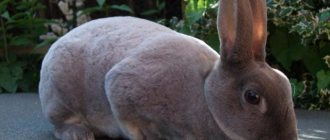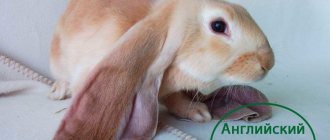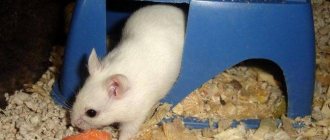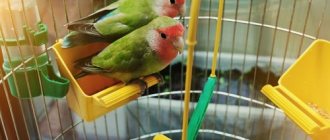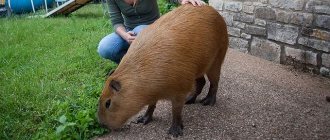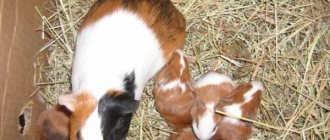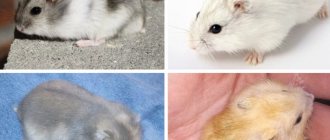One of the most beloved domestic birds is the parrot. This funny and inquisitive bird delights children and adults. The variety of parrots is so great that it is difficult to choose one of them for the first time. In this article we will talk about the types of domestic birds, the difficulties and disadvantages of keeping them in an apartment.
One of the most beloved pets, the parrot, brings both positive and negative aspects to its owners. Therefore, before you start one, you should familiarize yourself with all the information about keeping birds at home from people more experienced in this regard.
The positive aspects of keeping a parrot at home include:
- Minimum of unpleasant odors, unlike many other pets;
- Fun when interacting with a bird, teaching it human speech, songs, tricks;
- No need to walk your pet;
- Easy bird care;
- Birds wash themselves and clean their feathers, so there is no need for hygiene procedures for them;
- They eat little and are not picky about food, plus there are ready-made balanced foods for them;
- They rarely get sick.
Among the negative aspects, the birds need to fly regularly; for this they need to be released from the cage once a day or more.
During their first flights, they can damage curtains and indoor plants. Most often, it is these objects that suffer from sudden movements of birds. Another disadvantage is the noisiness of the parrot's chirping or singing. Moreover, some species have a not entirely pleasant voice. And finally, the bird still needs more attention than the same fish, which absolutely do not need human contact. If she feels abandoned and lonely, she will very quickly become depressed and may even get sick from it.
Information before getting a parrot
Before you buy a parrot for your home, you should make sure that everyone living in it is not allergic to birds.
Allergic reactions to fluff and excrement are not uncommon. First of all, this concerns children. Before purchasing a parrot, it is recommended that you familiarize yourself with the following information:
- Necessary conditions for keeping a bird - this means the type and parameters of the cage, its additional equipment, a play area for the parrot;
- The type of food necessary for the pet’s complete nutrition;
- The amount of time you need to devote to it daily;
- By what criteria to choose a chick?
- Features of living with other pets.
If you rationally take into account all these nuances, you can purchase a pet at a pet store or nursery.
First walks after adaptation
Experienced breeders do not recommend starting to tame a budgie in the first days. Moreover, while the bird is wild and afraid of your hands, it is dangerous to let it out of the cage. The first flights into the room can be made only after 2-3 weeks, when the parrot has already become comfortable at home and knows the situation.
It is quite possible that the first time the wavy will not be able to enter the cage on its own. The reason for this may be that it cannot find the entrance. However, do not rush to catch the bird with your hands - this may violate the fragile trust that you have built up in the first few weeks. After a few hours, the wavy will get hungry and this will motivate him to go to his native land.
If you doubt that your parrot will easily return to its cage, then listen to our tips on how to teach your budgie this simple skill.
let your parrot fly in the afternoon, when he is less active; some time before you release him, remove the feeder, let him become more hungry and start looking for food more actively; do not feed your budgie while walking, let it get used to eating only in the cage; if a wavy is looking for food and can’t find it, you can help it like this: place a saucer with food on the bottom of the cage and sprinkle a little food right on top of the cage to draw its attention to it; make a perch near the entrance to make it easier for the wavy to find its way; stay away from the cage if you see that the parrot is still afraid of you; If your pet never entered the cage, you need to wait until it gets dark and catch the wavy. This needs to be done together - one person turns off the light, the second catches the bird, puts it in a cage, and only then turns on the light. do not move the cage until the parrot gets used to its place.. Following our simple tips, your pet will easily get used to its new home
We wish your feathered friends a speedy adaptation
By following our simple tips, it will be easy for your pet to get used to its new home. We wish your feathered friends a speedy adaptation.
Which parrot to choose for the first time?
To make this choice, you need to determine the main purpose of the purchase. As a rule, a parrot is kept in order to admire it.
This bird looks beautiful, its plumage and behavioral factors bring aesthetic pleasure. It is no less rare to get a bird for fun and entertainment. It is very pleasant to interact with him, teach him tricks and pet him.
Another goal is to communicate with the parrot, as there are many talking species. Well, don’t forget about the beautiful singing of some parrots.
When choosing a bird as a decorative pet at home, pay attention to the beautiful, non-standard coloring of the feathers. It is often found in cockatoos, rosellas, lorises, and macaws. Talking birds include grays, lorises, amazon, cockatoos, macaws, eclectus, and, less commonly, lovebirds and wavy birds. The highest level of intelligence is observed in large parrots. Among songbirds, the cockatiel is especially popular.
When choosing a parrot, you should take into account the dimensions of the room.
Small birds live well in the apartment. Some breeds cannot live alone and need a mate. According to experienced bird breeders, it is recommended to get a wavy, cockatiel or lovebird for the first time. Since they are less demanding to care for, they are small in size.
Pet selection criteria
The main criterion is whether you can create a comfortable living environment for him.
Which parrot to choose?
These concepts include:
- Space - the cage should be of such a size that the parrot can move in different directions in it. Some large birds can only live outside the cage.
- Humidity, light and temperature conditions - for tropical birds it is important to have a warm room, additional illumination with a UV lamp, and a complete absence of drafts.
- Proper diet - there are vegetarians, there are omnivores, but they all need fresh, high-quality food, which can be expensive.
- The presence of a complete set of necessary accessories - from the already mentioned cage to toys, swings, feeders, drinking bowls and other pleasant little things.
The rest - the bird must be healthy, not enter into irreconcilable conflicts with the rest of the household and pets, and also not irritate the owner beyond measure. This is especially important to keep in mind. A screaming parrot (and they are mostly like that) is something that not every person can get used to. And don’t be fooled by the fact that during the purchase he was silent and behaved in an exemplary manner. Therefore, if you like silence, it is better to buy aquarium fish.
Budgerigar in the apartment
The most popular birds in the whole world. They are so loved because of their positive interaction with people, low maintenance, small size and affordable price.
In addition, budgerigars are capable of learning human speech. They are smart, quick-witted and agile.
Their intelligence allows them to distinguish colors, count to three, speak more than 100 words, and even learn small rhymes.
They can be recognized by their appearance due to their miniature size and bright plumage. On average, the length of the wavy reaches 19 cm. Feathers can be of a variety of colors. The most commonly seen parrot is a green one with a yellow throat and dark wavy lines on the back of the head. The character of the budgerigar is very good-natured and affectionate.
They interact well with children.
Most often they are cheerful, curious and sociable. If you care for them in the proper way, a budgerigar can live 10-15 years. When choosing a pet to take home, many people wonder whether to get a female or a male. It is better to keep budgies in pairs, especially if you do not plan to pay much attention to them. Without communication and contact with another sociable individual, birds do not feel well.
You can identify a female or a male by the color of the wax.
Females have light, beige or brown waxes. While males are bright blue. It is advisable to buy two parrots at once. If you purchase it later, then at first you will have to keep one parrot in another cage. This is necessary for them to adapt to each other. The fastest to get used to a new environment are young chicks aged 1-3 months. They are distinguished by more faded plumage, the absence of a white iris at the pupil, light pink cere, indistinct spots on the throat and smooth paws.
Boy or girl?
Many owners, thinking about a feathered friend, cannot determine who is preferable to them - a boy or a girl? Each of them has its own advantages and disadvantages, for example:
- Boy parrots have brighter plumage. They are energetic and restless, scream loudly, thereby trying to attract as much attention as possible. Different varieties of birds have their own signs of sex determination, for example, in wavy males, the cere is blue-lilac in color, evenly colored; Grays have a longer beak and a larger head. In cockatiels, sex can only be determined after three months, since at this age males begin to sing. After molting, male cockatiels turn gray with bright orange cheeks.
- Female parrots are often quiet and calm. The sex of various bird breeds can be determined by the following characteristics: - female budgerigars have a brown cere with light spots around the nostrils; — female grays have light-colored feathers on their bellies, their heads are slightly smaller, and their paws are wider apart than males; - a female Corella will not sing like a male when she reaches 3 months of age. And after molting, the color of her feathers will take on a light lemon tint.
Corellas at home
Another popular type of parrot is the cockatiel. It can be recognized by its appearance, thanks to its crest and sharp tail.
An interesting feature of cockatiels is that when they feel overexcited, the feathers on their heads rise. If they are smoothed, then the bird is in a calm state.
Cockatiels can also imitate human speech, but only when they live alone. Taking a couple of cockatiels, you will be able to hear a variety of chirping in bird language, songs and trills. The color of the plumage differs depending on the sex of the birds. Males most often have bright yellow and olive-gray plumage. There are characteristic red spots on the cheeks. Females have gray heads, a yellow crest, and pale brown spots on the cheeks. Today there is a variety of colors of cockatiels, so there is plenty to choose from.
These parrots have a very unique character; sometimes they can be aggressive and capricious. But at the same time, the birds are very capable, sociable and active.
They can learn human speech, learn melodies and repeat them in their unique, amazing voice. With good care, cockatiels can live up to 25 years. At home, couples reproduce well and are not demanding in care.
How to teach a budgie to sit on your hand and dance
The next step is to achieve the kind of relationship where you let your parrot wander around the room, and he flies and sits on you, wanting to talk. However, before that he must get used to the room. It would be a mistake to try to forcefully catch and place a feathered pet on your hand. Don't forget: this is not a completely tame bird yet. Open the door to the cage, go a little further and start calling the parrot. At the same time, show him a treat.
At first, your winged friend will probably fly in, pick up the treat, and immediately fly back to enjoy it alone. Under no circumstances should you yell at him for this, but be patient. Otherwise, the parrot will get scared and will no longer trust you. Over time, your feathered pet will cease to be afraid and will eat in front of you or directly at you. Then he will simply fly to you to chat.
Once owners and their pets have achieved the relationship of complete trust discussed in the previous paragraph, they usually move on and try to teach their budgies to perform a variety of movements. For example, dancing while performing a song. Achieving this will no longer be difficult. The most important thing is that you have tamed your budgie. We advise you to spend 15 minutes studying every day. Only regular training can lead to the desired result.
While your pet is sitting on your hand, play dynamic but calm music. It happens that when music is turned on, tame budgies listen to the sounds and themselves dance beautifully to the beat of the melody. However, they do not need any help. If this applies to your pet, note for yourself what music prompted him to start dancing and then select similar music tracks.
Perhaps music tracks will not have the same effect on your pet as described above, and no matter what you play for him, he will not rush to dance. In this case, you need to teach him to dance. Place the bird on your hand, turn on the music and move your hand in accordance with the rhythm of the chosen musical composition. To speed up learning, your head should also move in time with the music. After lessons, do not forget to praise your feathered pet. Practice with your budgie every day, only then will it soon begin to dance on its own.
Lovebirds as the first domestic birds
One of the smallest parrots that develop quietly and live in captivity. Their length reaches 10-17 cm, and their body weight is 40-60 g.
Most often you can find lovebirds with a basic green color.
You can recognize them by their appearance, thanks to their strong curved beak of red and yellow color. These birds have an active and curious character. They fly beautifully, move quickly and climb branches. Talking lovebirds are extremely rare to find. Therefore, it is generally accepted that they are poorly trained.
The peculiarity of lovebirds is that they are monogamous and choose one partner for life
.
If one dies, then the second one grieves and is sad for a very long time. But after some time it recovers. On average, lovebirds live 20 years. They are unpretentious in care, but they definitely need to be raised in families.
Large species of parrots
Large parrots are interesting primarily for their high intelligence and beautiful appearance.
But their character may not be so flexible and peaceful. Many of them are very capricious and aggressive. When choosing a large parrot, you need to take this nuance into account. They also require a larger cage and are more expensive to maintain. At home, most people prefer to keep such large individuals:
- Congolese. Long-winged birds weigh about 200-300 g. Body length can reach 30 cm. Distinctive external features: large head, green plumage, strong beak, orange forehead, wings and hips. The beak is gray in color. The character of Congo parrots is friendly and playful. They don't make much noise.
- Cockatoo. The high intellectual characteristics and artistry of this parrot delight residents of different countries. There are about 20 species of cockatoos in the world. Pink birds with yellow and white crests and goffins are most often suitable for keeping at home. They can learn up to 10 words and repeat various sounds.
- Amazon. The length of the body reaches up to 45 cm. The main color of the plumage is green interspersed with red, yellow and blue. More than 30 species of Amazon can exist in captivity. The most common: white-headed, yellow-headed, yellow-winged. Able to learn more than 50 words and repeat various sounds. He has a persistent and impudent character and is devoted to his master.
This list should also include parrots such as macaws and grays. But caring for them is even more demanding. It is also worth considering the high price of such a pet and the need for large space to keep it. But they are considered the most intelligent of all parrot species.
Jaco
The most popular smart parrot. It was a representative of the gray species that was included in the Guinness Book of Records as the smartest parrot. This baby will also live to be 60 years old if quality care is provided - unfortunately, Grays are very demanding of their conditions. And they need training; if you don’t do it, the baby will grow up aggressive.
Jaco easily learns new words, sounds, and melodies. Many people's vocabulary will be smaller than this bird can learn! In terms of intelligence, they are at the level of a German Shepherd, they can be taught any commands and skills.
